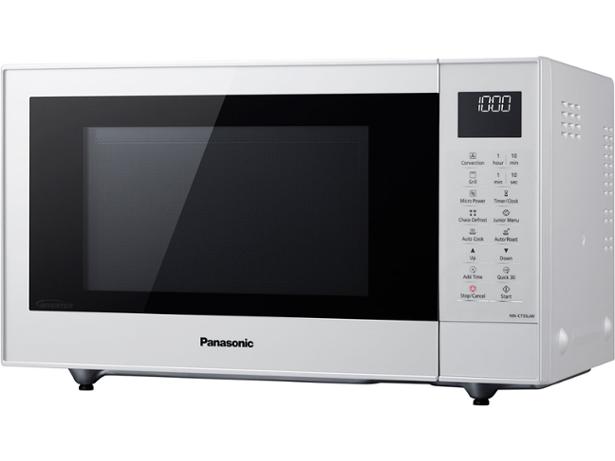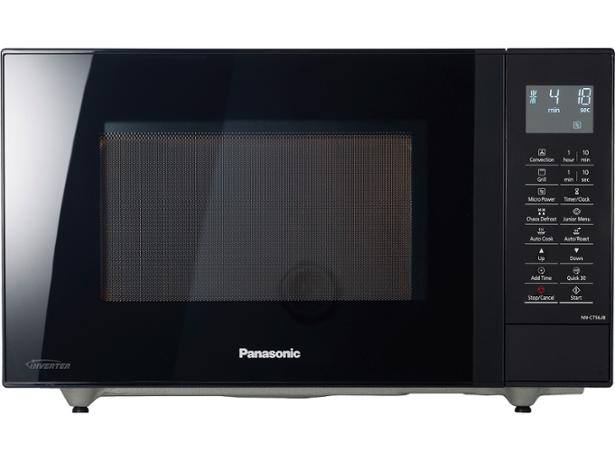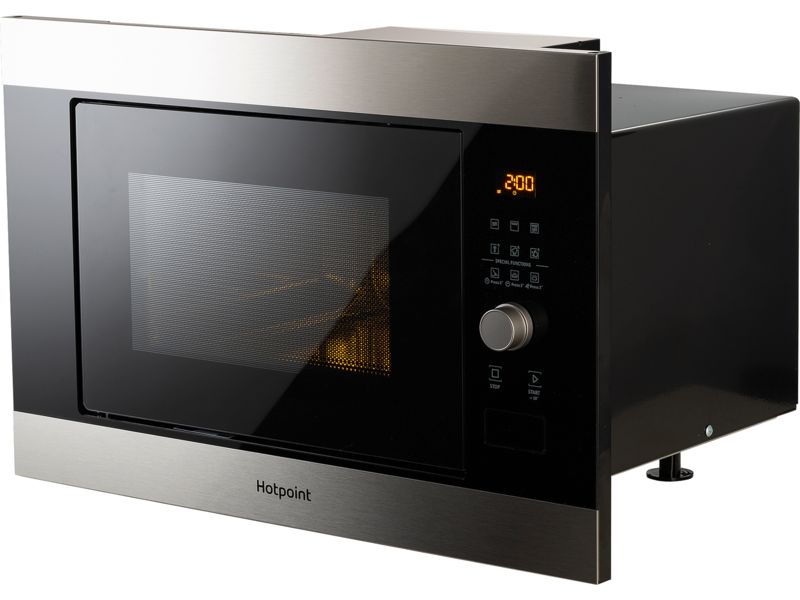By clicking a retailer link you consent to third-party cookies that track your onward journey. If you make a purchase, Which? will receive an affiliate commission, which supports our mission to be the UK's consumer champion.
How we test microwaves

We test more dozens microwaves in our specialist lab each year, but how do we test them and why are our tests some of the most rigorous around?
Unlike free-to-access review websites, which typically get the microwaves they review free of charge directly from manufacturers, we buy all the appliances we test ourselves, so you can have complete trust in our verdict.
We test all the microwaves we review in our laboratory, using multiple testers. The Which? overall percentage score is calculated purely on measurements and ratings supplied by our lab, meaning there's no room for bias when giving an overall rating.
Head to our round up of the best microwaves to help you decide what type of microwave you need.
Video: how we test microwaves
Watch this video to discover more about our extensive testing programme and why our microwave tests are different.
What are Which? Best Buy, Great Value, Eco Buy and Don't Buy microwaves?

A quick guide to the recommendations you'll see in our reviews:
Best Buy microwaves
Microwaves that score 75% or more in our tests are Best Buys and come with our firm overall recommendation, though you should still read our reviews before you buy to check for any weaknesses that may affect your buying decision.
Best Buy microwaves tick all the most important boxes – they are good at heating, defrosting and steaming; most are also user-friendly, easy to clean and quiet, even at full power.
Great Value microwaves
Microwave prices vary a lot, with some premium models priced at more than £300. If you're after a well-priced microwave, then our Great Value recommendation will come in handy.
Great Value microwaves are at least 20% cheaper than the average price of the microwaves we've tested and score 65% or more, so you'll get a decent product at a decent price.
Some Great Value models may also score well enough to be Best Buys, Eco Buys or both.
Eco Buy microwaves
If you want to make a more sustainable choice when buying your next microwave, an Eco Buy model is a good option.
Eco Buy microwaves come from brands that have a decent reliability record and should save you money over their lifetime, when compared to other models.
To become an Eco Buy, a microwave must:
- Have a total test score of at least 65%
- Score five stars for energy consumption
- Score at least four stars for cooking quality and ease of cleaning
- Come from a brand with a good longevity rating in our annual consumer surveys
Less than 10% of our reviewed microwaves are sustainable enough to be made Eco Buys.
To find out which ones make the grade, head to our microwave reviews and use the Eco Buys filter.
Don't Buy microwaves
Microwaves that score 45% or lower are Don't Buys.
Don't Buy microwaves fall down in important areas and aren't worth spending your money on.
How is the Which? score calculated?

The Which? overall score is a percentage. This score only takes into account the results of our tests and ignores price completely.
This means that all microwaves are tested on exactly the same scale, so you can compare any oven at any price and know how it measures up against its rivals in key areas.
Weightings and star ratings
We know that certain functions of microwaves are more important than others, so we weight our testing to reflect this. You've told us that the most important aspect is how well a microwave oven heats food, so this test accounts for a minimum of 35% of the overall score.
To keep things simple, the most important scores are shown as star ratings out of five on each microwave’s Test Results section as an easy-to-compare list of strengths and weaknesses, so you can quickly work out whether a microwave is right for you.
How the overall microwave test score is calculated
Solo microwaves
- 40% microwave heating
- 25% defrosting
- 25% ease of use
- 10% steaming
Grill microwaves
- 35% microwave heating
- 25% defrosting
- 25% ease of use
- 7.5% grill
- 7.5% steaming
Combi microwaves
- 35% microwave heating
- 25% defrosting
- 25% ease of use
- 5% convection
- 5% grill
- 5% steaming
Our key testing criteria

Below are the key microwave testing categories and how we evaluate each one:
Heating
Key question: Is the microwave good at heating food?
We test how well each microwave cooks or reheats food by using a special substance, which has a similar consistency to a lasagne when heated in a microwave. We heat the test food on full power and record how evenly a microwave heats it up, including whether all parts of the food reach a safe temperature and whether the microwave dries out food.
We also check how well microwaves maintain their heating power if used to reheat several meals in a row. Many microwaves lose power with successive use, which means that you'll end up needing to cook your food for longer.
The best microwaves heat food quickly and evenly without drying it out. The worst take far too long to heat up food, don’t get food hot enough or leave it dry and unappetising.
Defrosting
Key question: How good is it at defrosting?
We use slabs of lean, minced beef, which have been frozen for 12 hours, and set the microwave to defrost according to the manufacturer's instructions. We record the difference between the highest and lowest temperatures in the defrosted meat, and check for hot or cold spots. We also defrost frozen mince using pre-set auto-defrost programs where available.
The best microwaves defrost meat evenly; the worst start cooking some parts while leaving other parts still frozen – we've seen some that result in a difference of more than 20 degrees, while the best will leave a perfectly defrosted slab with an even temperature throughout.
Ease of use
Key question: Is it easy to use?
We assess how easy it is to set microwaves, and to carry out simple tasks such as cleaning them and opening the door. The best microwave ovens are very easy to use and are intuitive to set. For the worst microwaves, you’ll need to keep the instruction manual to hand.
Key question: Is the microwave noisy?
We record microwave noise when heating on full power and when defrosting. The quietest microwaves make about 47dB of noise in microwave mode, while the noisiest make 62dB. This will sound three times louder – and is loud enough to irritate some people.
Grilling and/or convection cooking
Key question: If the microwave has grill and/or convection cooking functions, are they any good?
For combination microwaves and microwaves with a grill, we test these functions to see if they work well.
To check how effective the grill is, we cover the grill rack with white, crustless bread and measure the spread and evenness of heating. The best grill microwaves will evenly toast more than 90% of the bread. The worst hardly brown any of the bread at all.
We test the convection function on combination microwave ovens by baking trays of fairy cakes. The best combination microwaves will produce well-risen, evenly browned cakes. Poor models will burn the cakes, or leave some of them uncooked.
Steaming
Key question: How good is it at steaming?
In 2018, we updated our microwave tests – based on feedback from Which? members – to include a test of how well microwaves can steam food.
If a microwave has a dedicated steam setting, we'll test it, but you don't need a special program to steam successfully in your microwave. You can simply pop veg into a bowl with a few tablespoons of water and cover it loosely.
We assess how well each microwave can steam a complete meal consisting of salmon, potatoes and broccoli. We check if any of the food is uncooked after steaming, using temperature probes in different parts of the fish, veg and potatoes.
We've found that some microwaves are able to produce an evenly steam-cooked meal while others over-cook some parts and leave others near-raw.
Head to our microwave reviews to discover which ones come out top of our testing.
Which? microwave testing changes
In 2023, after a survey showed our members place more value on a microwave's evenness of heating, we changed our evaluation criteria, increasing the score required for a microwave to be a Best Buy from 74% to 75%. This meant that some products lost their Best Buy recommendations. The affected models, while not Best Buys anymore, are still great overall and products worth buying.
In 2018, we updated our tests to make them even more challenging, including adding a new test on steaming food, based on member feedback about how they use their microwaves. This means that scores from microwaves tested from February 2018 or later aren't directly comparable with the scores of microwaves tested before this date.



